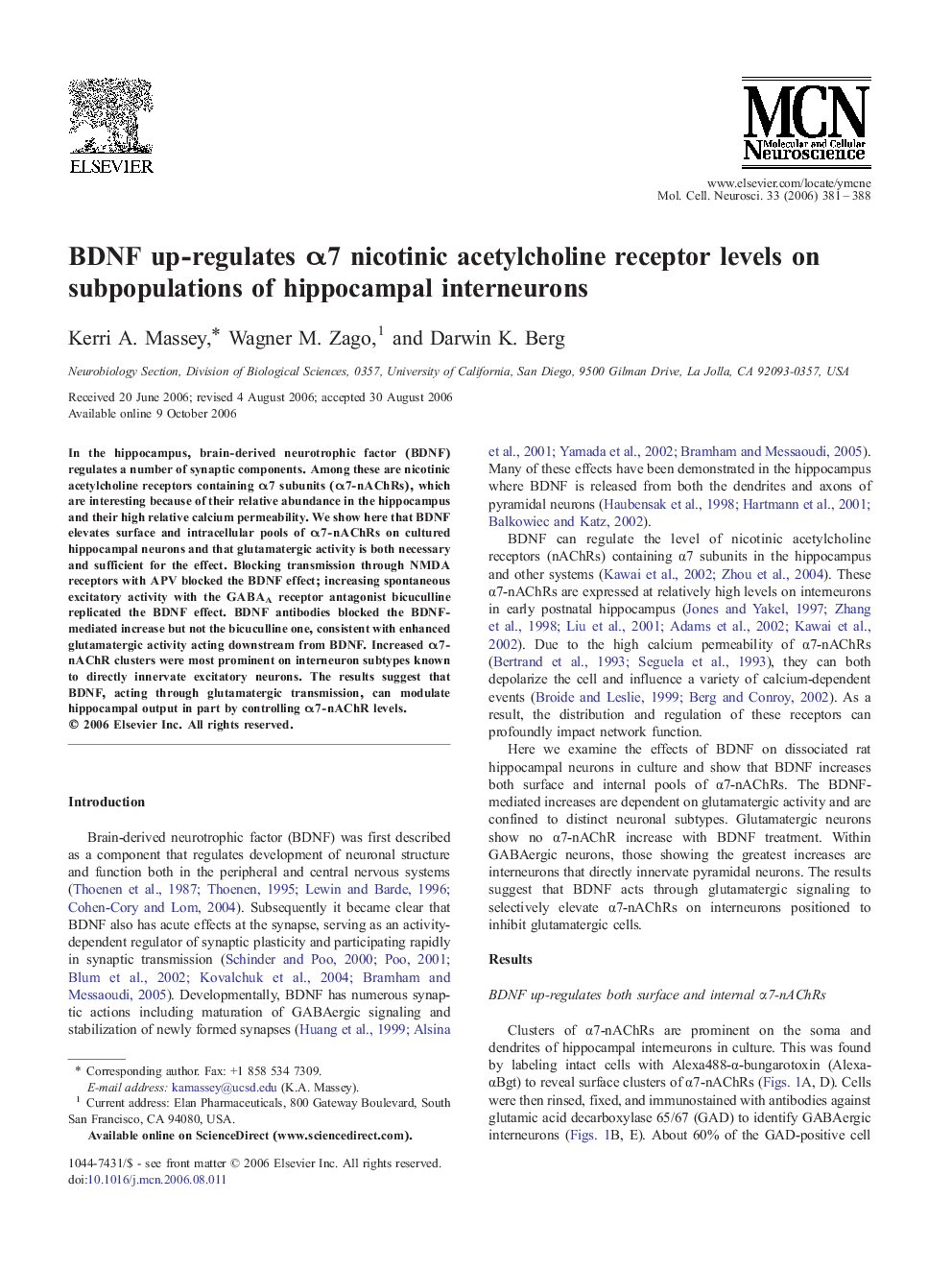| Article ID | Journal | Published Year | Pages | File Type |
|---|---|---|---|---|
| 2199349 | Molecular and Cellular Neuroscience | 2006 | 8 Pages |
In the hippocampus, brain-derived neurotrophic factor (BDNF) regulates a number of synaptic components. Among these are nicotinic acetylcholine receptors containing α7 subunits (α7-nAChRs), which are interesting because of their relative abundance in the hippocampus and their high relative calcium permeability. We show here that BDNF elevates surface and intracellular pools of α7-nAChRs on cultured hippocampal neurons and that glutamatergic activity is both necessary and sufficient for the effect. Blocking transmission through NMDA receptors with APV blocked the BDNF effect; increasing spontaneous excitatory activity with the GABAA receptor antagonist bicuculline replicated the BDNF effect. BDNF antibodies blocked the BDNF-mediated increase but not the bicuculline one, consistent with enhanced glutamatergic activity acting downstream from BDNF. Increased α7-nAChR clusters were most prominent on interneuron subtypes known to directly innervate excitatory neurons. The results suggest that BDNF, acting through glutamatergic transmission, can modulate hippocampal output in part by controlling α7-nAChR levels.
